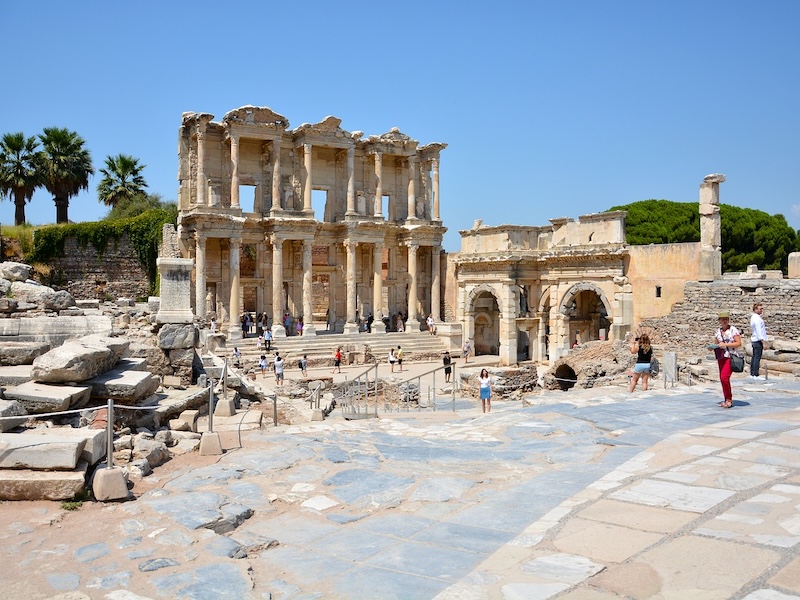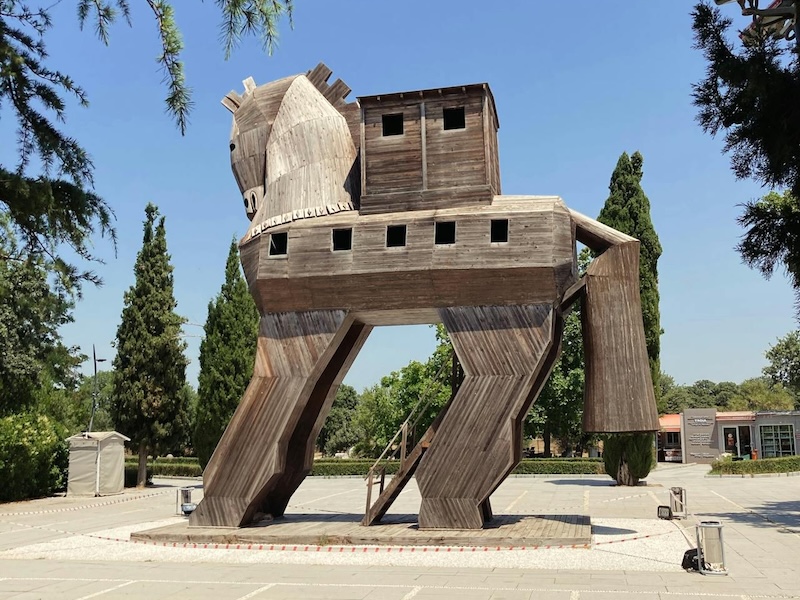Things to do in Aegean Coast
The Aegean is one of Turkey's most visited and developed regions, and for good reason. This area is home to some of the country's most captivating treasures, from the Roman city of Ephesus to Bodrum and its surrounding beach towns, which draw sun seekers from all over the world.
With sophisticated hotels, a buzzing nightlife scene and remarkably unspoilt historic sites, there's something for everyone. Even Izmir, Turkey's third-largest city, with its sprawling concrete, will surprise travellers with an interesting array of museums, bustling bazaars and lively seaside promenades.
Beyond these major destinations, there are many other fascinating places to explore. Charming hill towns such as Sirince, the otherworldly white cliffs and thermal springs at Pamukkale, the seaside charms of sleepy Gümüslük village near Bodrum, and the ancient cities of Priene, Miletus, Didyma, and Laodicea all add to the region's allure. Not to mention, the long, sandy beaches of Altinkum and other coastal spots offer plenty of opportunities for relaxation and adventure.

Ephesus
Ephesus is the biggest and best-preserved ancient city in Turkey and is one of the world's most spectacular historical sites. The city and its harbour were established on the mouth…
Ephesus
Ephesus is the biggest and best-preserved ancient city in Turkey and is one of the world's most spectacular historical sites. The city and its harbour were established on the mouth of the Cayster River and, in the 2nd century BC, became the most important port and commercial trading centre in Anatolia. Alexander the Great ruled over it during the Hellenistic period and it was once capital of Roman Asia under Augustus in 133 BC. Ephesus declined during the Byzantine Era and by 527 AD it was deserted. Ephesus is also important as the early seat of Christianity, visited by Saint Paul, whose letters to the Ephesians are recorded in the New Testament. Guides are available and can offer a rich insight into the history and architecture of the ruins. Chariot-worn streets contain amphitheatres, murals, and mosaics, as well as baths, fountains, and columns. Highlights include the enormous Library of Celsus, the Temple of Hadrian, and the Grand Theatre where Paul preached to the Ephesians. The city was originally dedicated to the goddess Artemis and her once-magnificent temple is considered one of the Seven Wonders of the Ancient World.

Pamukkale
Calcium-rich mineral springs have surged over the edges of this mountain plateau for thousands of years, resulting in an intriguing natural masterpiece. Meaning 'Cotton Castle', th…
Pamukkale
Calcium-rich mineral springs have surged over the edges of this mountain plateau for thousands of years, resulting in an intriguing natural masterpiece. Meaning 'Cotton Castle', the rock formations of Pamukkale are a series of natural shelves, ridges and terraces turned white from the solidified chalky calcium deposits of the thermal waters. From a distance it appears to be a dazzling white fairytale castle, with a formation of tiers rising from the ground containing warm water pools. The hot springs have been used since Roman times and are believed to cure certain ailments. Additionally, visitors shouldn't miss the bubbling Sacred Pool of the Ancients, the main source of the springs that created the white terraces. Fortunately, its mineral waters are open for public bathing. Pamukkale is also the site of the ancient Roman spa-city of Hierapolis, and there are several ruins scattered about the area, including an impressive Roman theatre. It was considered a sacred site for its magic healing waters and was the holiday destination of kings and emperors of the Pergamum and Roman Empires.

Ancient Troy
For about 3,000 years the legendary battle of Troy pervaded Western culture. The story, told by Homer in the Iliad, was regarded as just a myth, until the ruins of the city were fo…
Ancient Troy
For about 3,000 years the legendary battle of Troy pervaded Western culture. The story, told by Homer in the Iliad, was regarded as just a myth, until the ruins of the city were found at Hisarlik, in western Turkey, in the mid-19th century. Today the romantic story draws tourists and archaeologists alike to the site, where not a great deal remains to be seen beyond the ancient walls and a replica of the famed Trojan horse that enabled the final conquering of the city by the ancient Greeks. The setting is also spectacular, offering views of the Dardanelles and the hills of Gallipoli.



